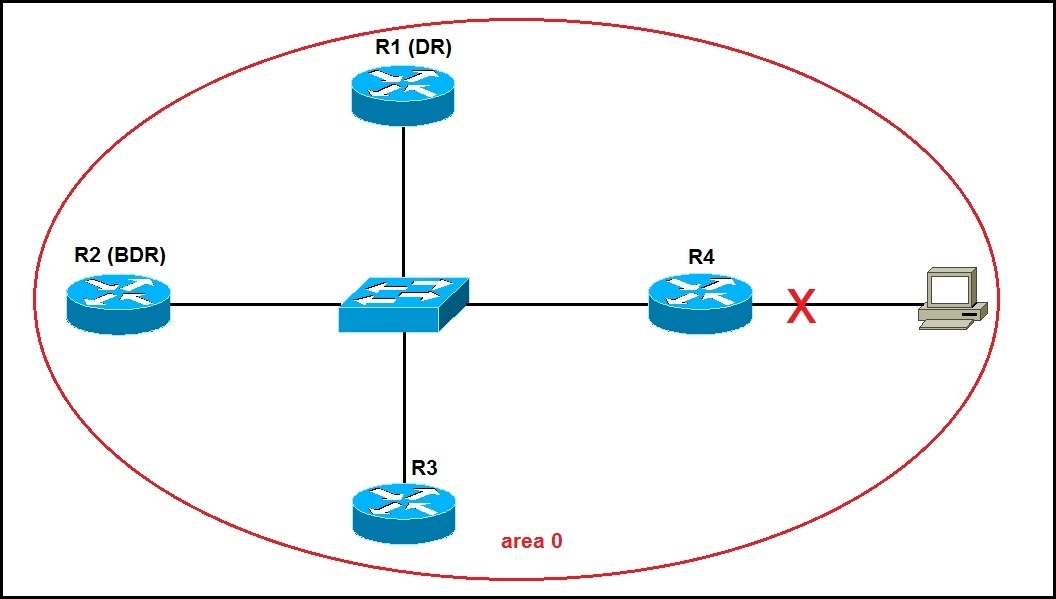Designated router and backup designated router
Based on the network type, OSPF router can elect one router to be a designated router (DR) and one router to be a backup designated router (BDR). For example, on multiaccess broadcast networks (such as LANs) routers defaults to elect a DR and BDR. DR and BDR are elected to minimize the number of adjacencies formed and to serve as the central point for exchanging OSPF routing information. However, on point-to-point links, the DR and BDR are not elected since only two routers are directly connected.
Each non-DR or non-BDR router will exchange routing information only with the DR and BDR, instead of exchanging updates with every router on the network segment. DR will then distribute topology information to every other router inside the same area. The backup designated router (BDR) serves as a hot standby for the DR. It receives all routing updates from OSPF adjacent routers, but it will not disperse LSA updates.
To send routing information to a DR or BDR, the multicast address of 224.0.0.6 is used. A DR sends routing updates to the multicast address of 224.0.0.5. If the DR fails, the BDR will take its role of redistributing routing information.
On LANs, DR and BDR have to be elected. Two rules are used to elect a DR and BDR:
1. the router with the highest OSPF priority will become a DR. By default, all routers have a priority of 1.
2. if there is a tie, the router with the highest router ID wins the election. The router with the second highest OSPF priority or router ID will become a BDR.
Consider the following example:
All routers in the network above are running OSPF and are in the same area (area 0). Let’s say that the routers R1 and R2 have been elected as DR and BDR because they have the highest and the second highest router ID (100.0.0.0 and 90.0.0.0 respectively). If the R4’s directly connected subnet fails, R3 informs only R1 and R2 (the DR and BDR for the segment) of the network change. R1 (the DR) then informs all other non-DR and non-BDR routers of the change in topology (in this case, only the router R3).
We can verify that R1 and R2 are indeed the DR and BDR of the segment by typing the show ip ospf neighbors command on R3:
R3#show ip ospf neighbor Neighbor ID Pri State Dead Time Address Interface 60.0.0.0 1 FULL/DROTHER 00:00:33 10.0.0.5 FastEthernet0/0 100.0.0.0 1 FULL/DR 00:00:33 10.0.0.1 FastEthernet0/0 70.0.0.0 1 FULL/DROTHER 00:00:33 10.0.0.4 FastEthernet0/0 90.0.0.0 1 FULL/BDR 00:00:33 10.0.0.2 FastEthernet0/0




